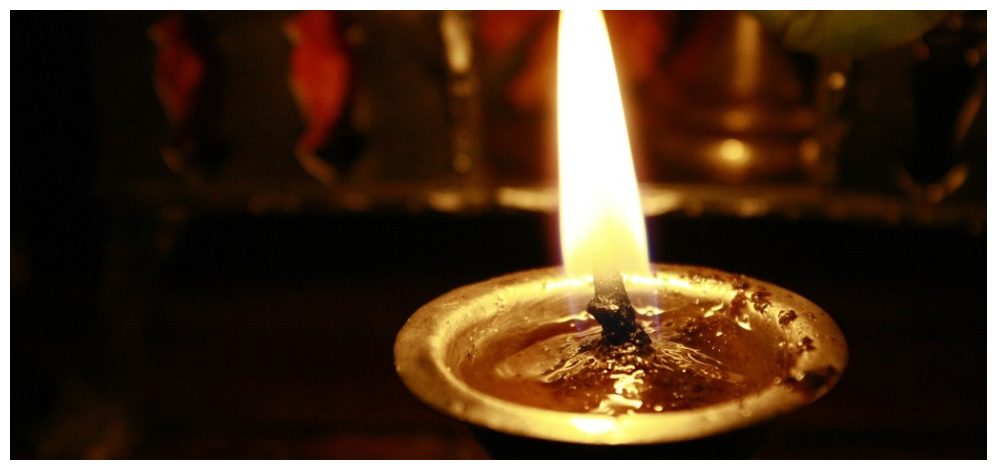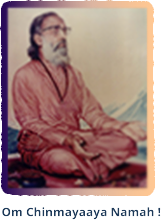“Children are not vessels to be filled, but lamps to be lit” – Swami Chinmayananda
Children are the major focus at Chinmaya Mission Boston – MetroWest Chapter. The goal of the Bala Vihar program is to “wake up the sleeping giant” within and inspire them to reach their maximum potential. This is achieved by imparting a value-based education through a specially designed, age appropriate curriculum that has been carefully developed by expert Chinmaya Acharyas. Through inspiring stories, projects, role-playing, and songs, a child’s mind is awakened to the higher. “Why We Do What We Do” is a recurring theme throughout the curriculum.

The Chinmaya method of teaching has been repeatedly proven to work in Balavihars and recognized widely as the most successful program for children by acclaimed Hindu organizations around the world. Children who go through the course not only learn all the values fundamental to Hindu beliefs, but also how to apply them to their day-to-day challenges. This gives children the opportunity and knowledge to resolve their identities in this dual culture and go on to be strong leaders with integrity and pride in their rich heritage.
Chinmaya Bala Vihar Curriculum for Grades 1 – 8b
The children are taught by a team of specially trained and dedicated volunteer teachers. The teachers follow a curriculum designed for each grade level (from Kindergarten to Grade 12) covers a wide range of topics. This Curriculum for Chinmaya Bala Vihar is very structured and is based on our scriptures and how they apply to our daily lives. Acharya Darshana Nanavaty of Chinmaya Mission Houston, has created the teachers handbooks for all grades from K-12. The Handbooks are very well designed and cover the topic of the year in depth through inspiring stories, discussions , fun games & activities that reinforce the lesson. There are 40 lessons in a year and each lesson is one hour long.

Please click here to learn more about the curriculum. The following is a summary of each grade. Student also learn quiet times/meditation, chant shlokas (some examples are here) etc during these classes. Click on link for each grade to view a sample page from the text book used for that grade.
Simple values like aspiration, brotherhood, cleanliness etc. are taught through animal stories and coloring. Through simple hands-on activities and demonstrations, children learn that just because something is not seen does not mean it is not there! Hence, the need to fix our mind.
Children learn the story of Ramayana and learn to comprehend the values that Sri Rama lived by. Coloring and drawing scenes, and following the trails of Sri Rama’s journey with events and stories inspire and inculcate the imagination.
The metaphor for the text is, “Have a backbone like a ruler and rule the world.” Learn from Hanumanji the values like courage, strength, fearlessness, alertness, eloquence etc., as they are the vitamins that make our mental backbone strong; thus, develop a majestic personality like Hanumanji, Children also learn how through discipline they can earn merits in the world by studying Hanuman Chalisa and following its teachings. Children will do a project of the backbone of Sri Hanuman.
Through the stories of different avataras of Lord Sri Vishnu, children learn to own up their own actions, learn to ask for only what they need, and not necessarily what they desire. .
Grade 4 covers canto ten and eleven of the Bhagavatam. Canto ten is Krishna lila stories of Krishna. Through these stories children learn about sharing, self- discipline, and are taught to introspect and plot their observations on a daily basis.
My Twenty-four Teachers start with the metaphor, “To succeed, one needs a coach.” And once the coach is valued, mind automatically learns from all. Thus, children are taught to recognize and have reverence’: for our teachers in nature. From Mother Earth, we learn the value of being patient, from mountains, to be steadfast, from an arrow-maker the value of concentration, etc.
Importance of symbols in life is. explained and how so many deities are the symbols of the one Lord, who pervades all and how these symbols teach us to live out life of harmony, .fulfillment, and happiness.
India,
Why India is sacred? Our rich heritage and saints and sages are our treasure. What do we learn from our sages and our heritage, and how they contribute to our life of success is the core content.
These two texts have been developed from Ramacaritamanasa composed by Sri Tulasidasa, God, who is Omnipresent” where do I find Him in the world, what are His addresses? As the topic is taught, children understand that each one of us is His address and we can find Him within us, if We learn how to live out life full of love and kindness to all. Key To Success teaches children how to achieve success in the world by living a life that is rich in values. Emphasis is on the mind and how a disciplined mind achieves happiness and peace.
The main theme, as the title Yato Dharmah Tato Jayah suggests is to teach children that where there is Dharma, there is victory and to gain victory in life, one must follow Dharma. The text dives deep into teaching what is Dharma, how to live by Dharma, along with the story of Mahabharata and a comparative analysis of the main characters and their Dharma in the epic. The goal of life and how we are the architect of our own future is explained through the Law of Karma. Two unique activities-charting and keeping a vigilance of our speech, and setting Dharma Thermostat of different values-are done throughout the year to facilitate the learning of introspection .
Chinmaya Bala Vihar Curriculum for High Schoolers :
book-25155_640Teenagers in high school transition to an introduction to Hindu Culture where the foundation is laid for a 2-year study on the Bhagavad Gita and then culminating in a study of Self Unfoldment book by Pujya Gurudev. The classes provide a forum to discuss, debate and understand the wisdom in the Hindu Culture and the Gita and designed to stimulate independent thinking and increase the awareness of the inherent potential within each individual. High school students are encouraged to volunteer in community and social service activities with the goal of preparing today’s youth to be responsible and successful adults of tomorrow. Here is the curriculum for high-schoolers.
The main message conveyed to children through this text is how they can live by the Hindu Sanskrti to reduce stress and tensions of life. What are the Hindu Samskars and how they are based ort Vedas and Upanishads; how by living them, they can accomplish the goal of life easily are dealt with in this text.
Children learn the first nine chapters of the Gita in 10th grade and the remaining nine chapters in Grade 11. Children are taught through flowcharts and other unique approaches, the logical sequence of the message of the Gita. “Holy Gita” by Swami Chinmayananda is the text used in the class.
text, written by Swami Chinmayananda comprising the message of the Upanishad and the Gita. In all grades (Kindergarten-to Grade’ 12) the emphasis of the curriculum is on “the mind.” Just as we go to gym to tone our muscles of’ the body, to be healthy physically, these teachings, which are rooted in the bedrock of our scriptures, tone the muscles of the mind and intellect – i.e., they integrate-the human personality. A healthy mind; a happy mind, and a peaceful mind makes life meaningful and takes us to the highest evolution that man is capable of achieving in life. An integrated personality facilitates the Journey to the Truth to experience the Self worth.
Language classes :
We also provide language classes for Hindi, Telugu, Tamil, Sanskrit, and Kannada. Please note that students MUST attend Bala Vihar to be eligible for language classes. We DO NOT provide stand alone language classes
Adult Satsang
While the children are in their respective classes, the parents are encouraged to attend an adult satsang session of their own. Experienced members conduct guided sessions where parents can also learn the basic philosophies of Sanatana Dharma by watching video lectures by Swami Chinmayananda, Swami Tejomayananda, and other Swamis and Acharyas of the mission. There are also guided group discussions which in turn gives parents the opportunity to ask questions about the value of our culture and how to answer questions that children may raise.
Shloka and Bhajan Class
Chanting Shlokas and singing Bhajans are complementary activities to the core curriculum and those who are interested in learning an attend classes specifically for these areas. Please see the schedule for the timing. Note that these classes are not offered standalone. Students MUST attend Bala Vihar in order to enroll for this classes. The timing is such that it does not conflict with the bala vihar class schedule.
